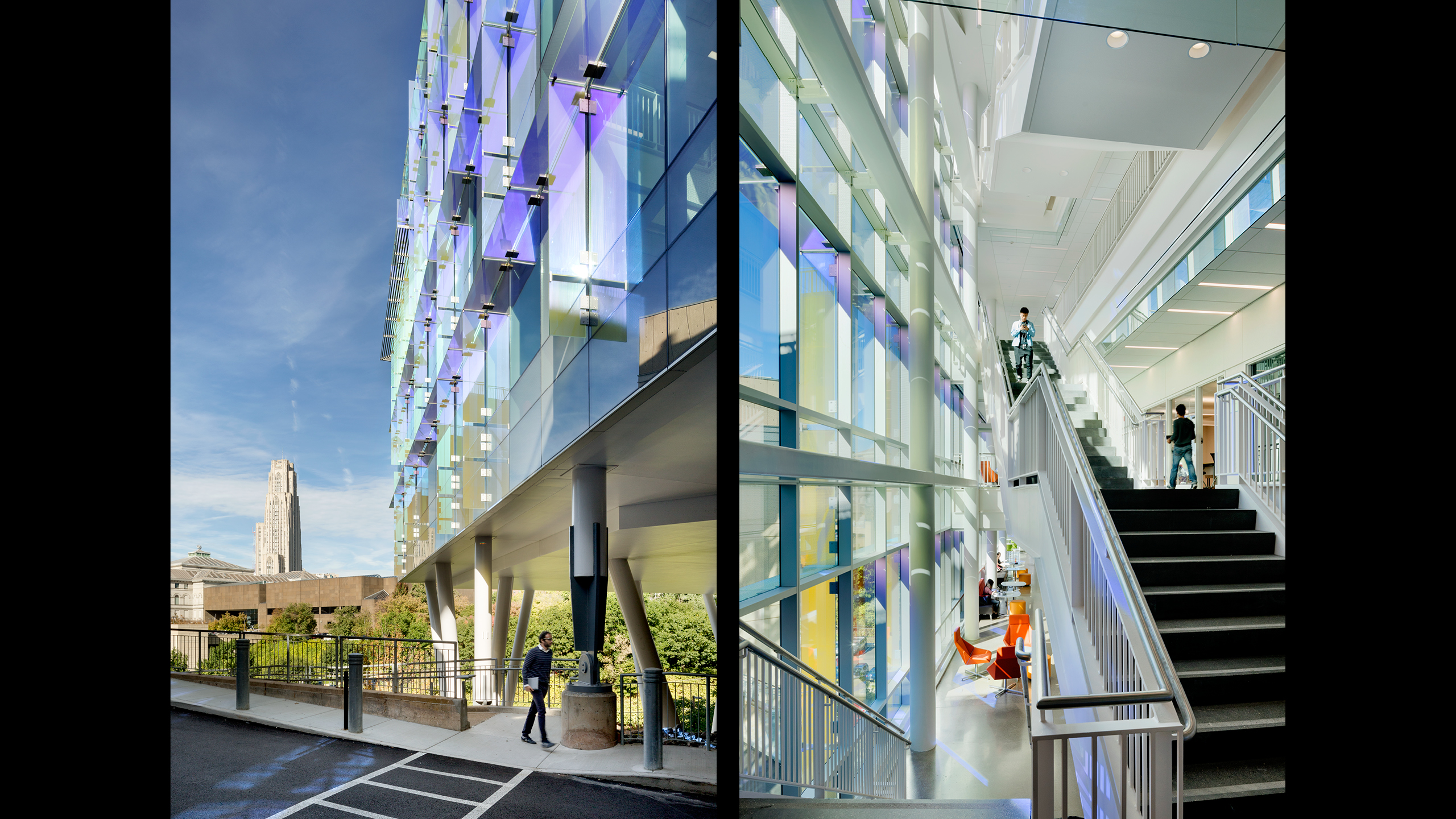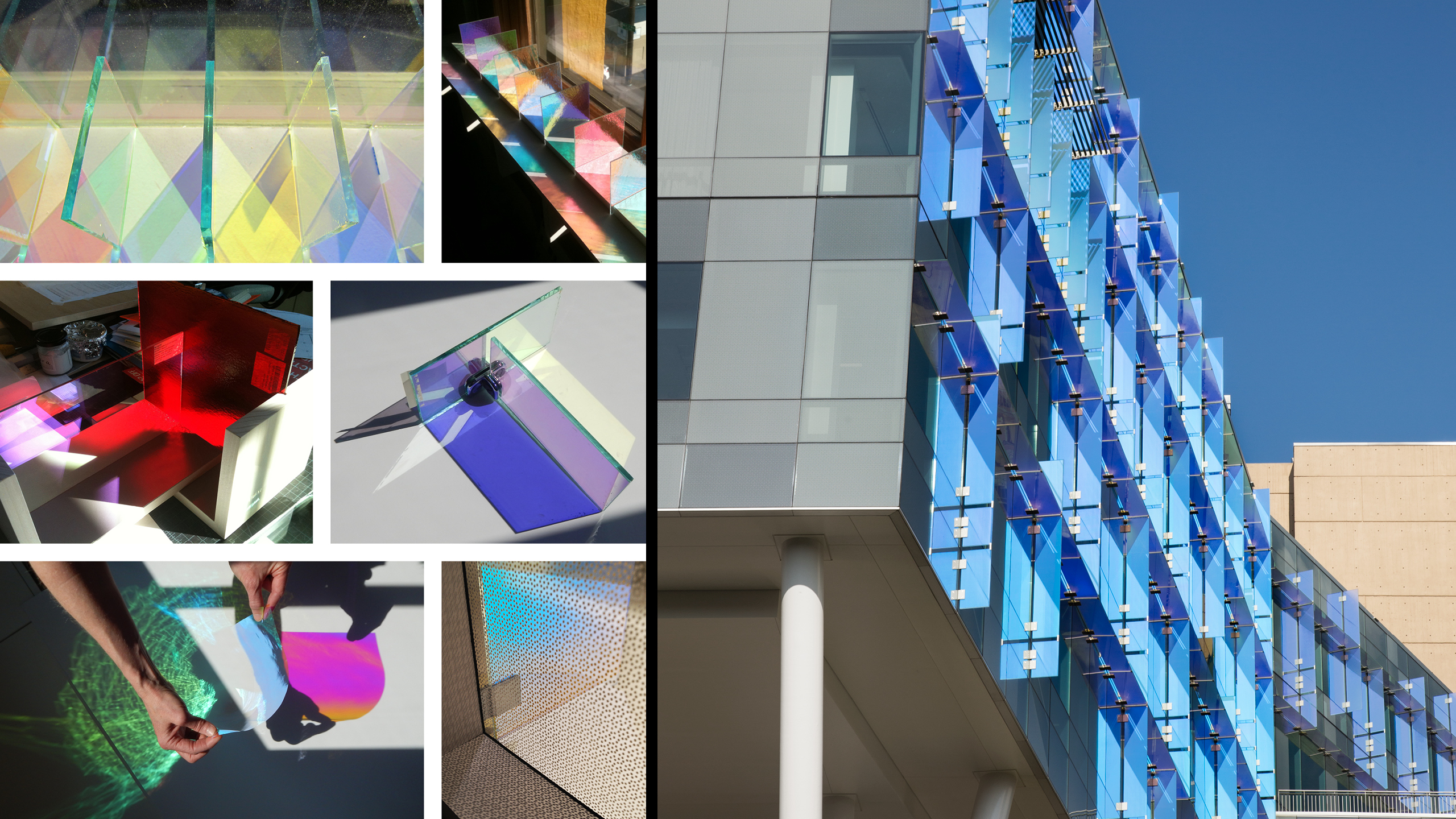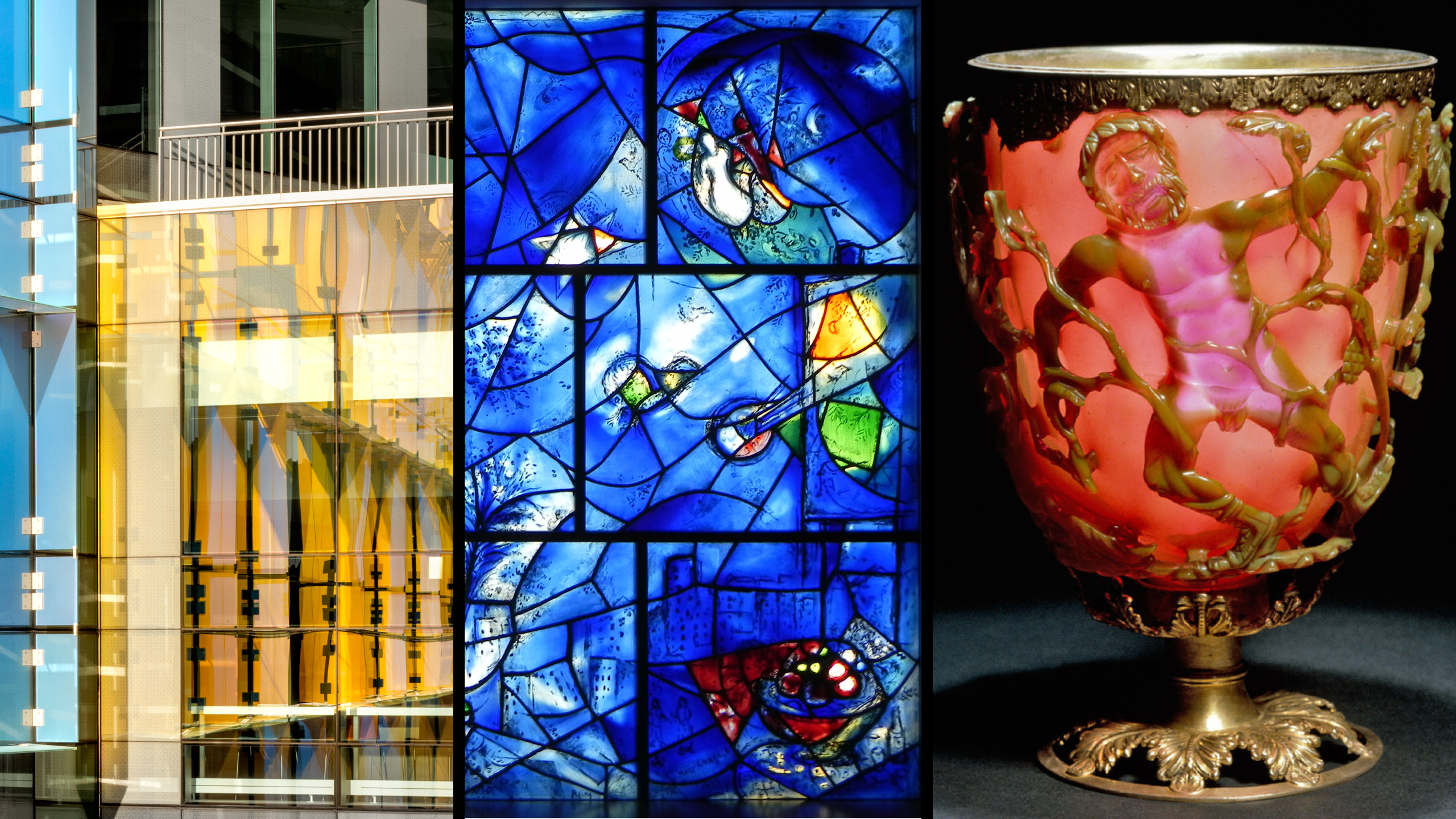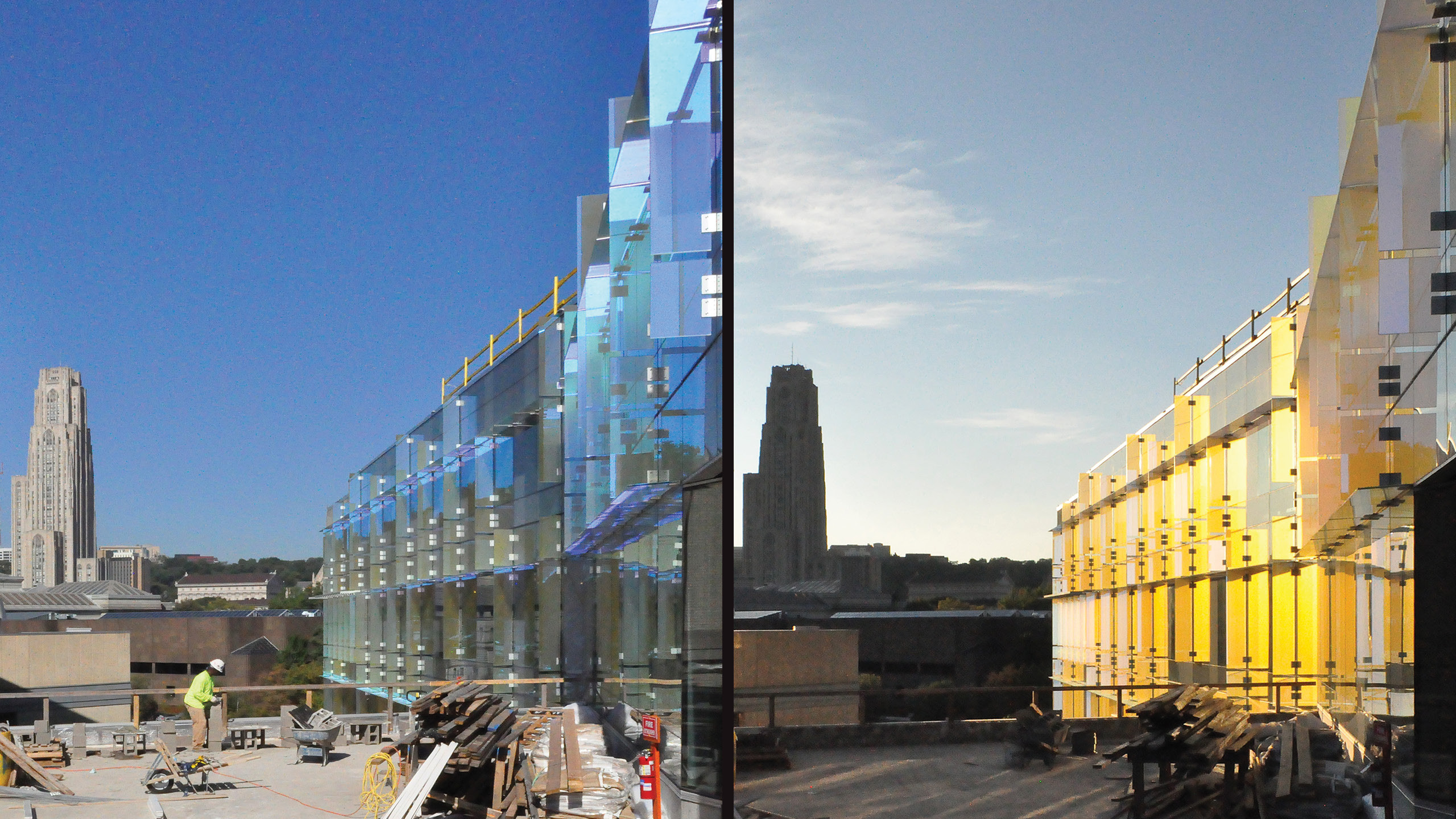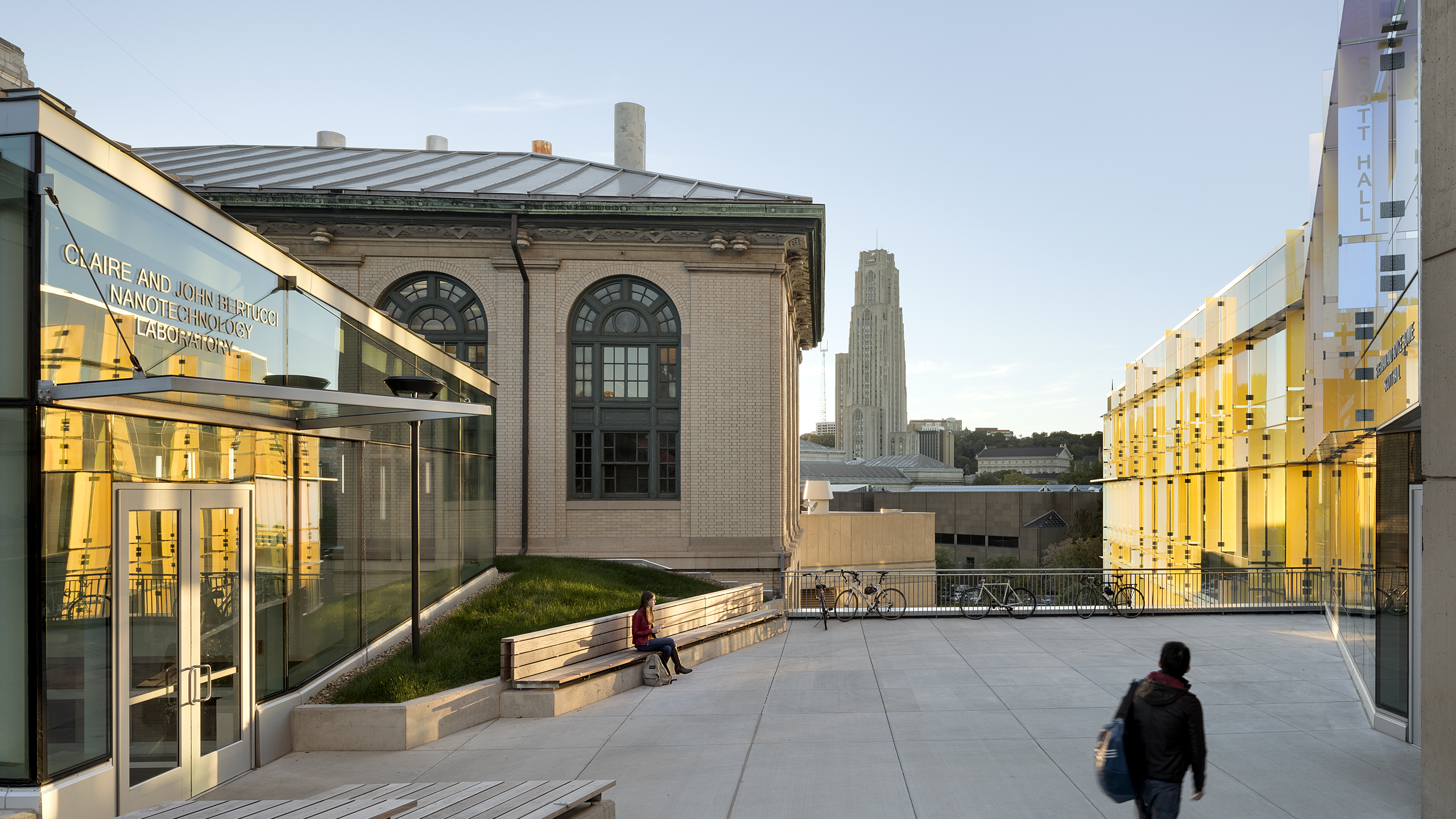Materials Technology R&D: Nanoscience and Dichroic Glass
Client: Carnegie Mellon University
Location: Pittsburgh, Pennsylvania
Type: Higher Education, Interdisciplinary Teaching and Research
LEED Gold Certified
LEED Gold Certified
Carnegie Mellon University is one of the premier research institutes at the forefront of advanced nano-technology and complex engineered systems. For the design of the curtainwall of the new building, OFFICE 52 focused on the transformative power of architectural materials in conjunction with the research and work from the interdisciplinary programs that will be housed in the new building. These include the College of Engineering, the Scott Institute for Energy Innovation, the Disruptive Health Technology Institute, Biomedical Engineering, and the Institute for Complex Engineered Systems (ICES). These programs have a focus on nanotechnology at various levels. We wanted to integrate aspects of science, art, technology and the architecture to create a meaningful design and push the conceptual limits of glass as a material to activate the building’s interior and exterior spaces with color, texture and light. We thus focused on the material of glass and how to put it together to form a transformative experience.
This created the opportunity to link the concepts of nanoscience, scale, artistic visualization and photons|light to metaphorically and technologically embody the innovative nature of the science taking place within the building. Utilizing the inherently transformative qualities of dichroic glass and ceramic frit combined with innovative glass fabrication techniques and a play on scale, we created a world of constantly changing light and perception that shifts with the sun’s angle, intensity, and position as well as a person’s location as they move through the spaces.
We were interested in the concept of scale in nanotechnology and the graphic visualization of nano-based research. Nano is from the Greek word ‘nanos’, meaning dwarf, and is a prefix in the SI measurement system (nanometer) that means 10 to the negative 9, or one billionth. Just as with volumetric space, it is about an understanding of scale. During the design process, we looked at the color, materiality, technical capabilities and the light-transmitting qualities of glass. Our design plays upon the concepts of scale and light in science with the use of dichroic technology for the sun-shading fins, ceramic frit in the curtain wall, and the color of the solar spectrum (wavelength measured in nm). We built in-house mock-ups with dichroic glass in conjunction with computer simulations of the movement of natural light to study the light and color variations that occur as the solar angle changes and the observer changes positions in space.
Dichroic glass has a transmitted color that is completely different from the reflected color because certain wavelengths of light pass through the metal oxides vaporized onto the surface of the glass in multiple layers as an ultra-thin film in the fabrication process. The dichroic float glass is produced in a dip-coating process whereby each layer of metal oxide coating is applied in a thickness of less than 100 nanometers. The resulting material is about 30 millionths of an inch thick. The manufacturing process is a nanoscience example of thin film deposition technology originally developed by NASA in the 1950’s and is currently used in a multitude of industries such as optics and semiconductors. Due to the advancement of fabrication processes for monolithic art and architectural applications, glass companies can produce vibrantly transparent dichroic glass for larger scale use, such for with our design of the façade of Scott Hall.
We looked at a variety of artists and their work in color and light while concurrently researching the concept of nanoscience. Source examples include the Lycurgus cup, a fourth century Roman piece made of translucent glass containing colloidal gold and silver particles proportionately dispersed in the glass matrix with changes in color dependent on the location of the light source, as well as Chagall’s 36-colored glass installation, “America Window,” on which he drew with metallic oxide paints that were permanently fused to the glass with heat. In addition to the function of being sun-shading elements and a bird-safe building treatment, the dichroic glass fins and their placement in relation to the ceramic frit was of utmost importance in the façade design. We completed numerous sketches and study models that weaved the two systems so that they read as one artistic composition, similar to the composition you might find in a Caio Fonseca painting. We also looked at the horizontal and vertical proportions of the surrounding traditional campus buildings and derived an overall design for the ceramic frit on Scott Hall that tied into this existing contextual system yet changed scale as it wrapped around the building. As a bird-safe building treatment as well as sun-shading device, it was important that we include the dichroic glass fins. On site in Pittsburgh, the construction team built several full-scale mock-ups of a bay of the dichroic glass fin and ceramic frit system to confirm fabrication details of our design aesthetic as well as weather bearing capabilities.
Building photography by Jeremy Bittermann. Detail of ceramic glass frit photo by Isaac Campbell. On site and studio model photos by OFFICE 52 Architecture.
additional:
Design Research: Dichroic Glass and Nano-Fabrication
The Architect’s Newspaper Glass Edition Feature
Article archpaper.com
UrbanGlass Article Feature
Project Link, Scott Hall at Carnegie Mellon University
The Labs at Scott Hall
Book and Graphic Design: Form and Dichroic Light
Invited Competition Winning Design Entry Scott Hall
Custom Stainless Steel Screen Design Scott Hall
R&D Case Study: Nanoscience and Dichroic Glass
R&D Case Study: Glass and Bird-Friendly Pattern
